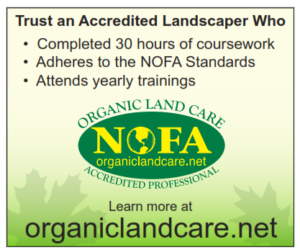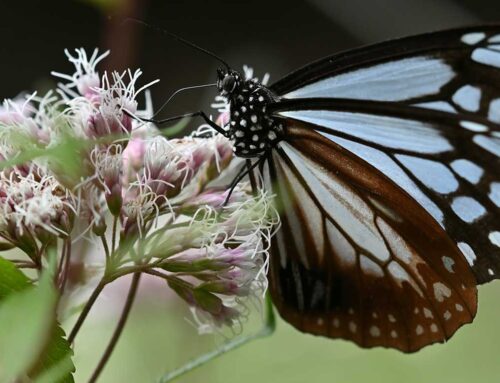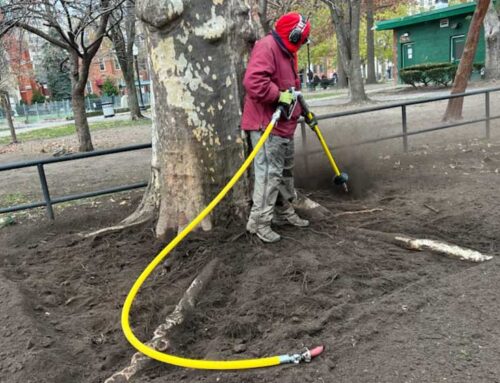Lincoln Landscaping – Sustainable Landscaping
Throughout the year we at Lincoln Landscaping promote and utilize compost and our own compost tea within our commercial projects, our playing fields and athletic fields, and within our residential properties with relation to both lawn and gardening and plant growth. We encourage and aid many a client in establishing a home compost pile and the maintenance and upkeep thereof. Being that autumn is just around the corner now, and fall being the an ideal time to apply this soil amendment; many of them are asking me “Mike, think my compost is ready?” How much longer before I can apply it and so forth?
Those questions got me thinking and then pondering about one of my most highest recommended books, Let it Rot by Stu Campbell (also referred to as “the home gardener’s guide to composting”. This is one of my recommended books that I have actively promoted in my “organic library” under suggested reading.
The following excerpts, taken from this well written documentation of organic compost, provide valuable insight into the question – is my compost done? Answering many of the questions put forth to me regarding compost, compost tea, and its uses and benefits to both lawn and gardening; herein are the criteria I follow:
Compost – The End Product
“All right, the inevitable question, “How do we know
Because there are so many “ifs” involved, there can only be some general guidelines as far as any sort of a composting timetable is concerned. We have already seen that if you are just starting out, and if you have the right equipment – such as a shredder – fourteen-day compost can be made a la the University of California method. If, on the other hand, you have more time, it may be better to wait longer for your compost. Perhaps you and yours generate enough waste around your home to have several compost piles going at once, and can afford to let fermentation go on for two years or more the way Samuel Ogden does.
Four to six months seems to be the normal amount of time needed to make superior compost here in the northeastern United States. If we were to start a pile in November, it would take somewhat longer than that. If we were to start one in June, if we attended to it faithfully, and if we turned it carefully and regularly, it might take less time than that. If you live in a climate that is warmer than ours, closer to that of Indore, you can probably do a satisfactory job of composting most kinds of organic matter in the three months that Sir Albert Howard recommends. The safest bet is to think in terms of giving the compost a chance to decompose for a longer time that seems necessary.
Here, as I see them, are several characteristics of ideal “finished” compost:
1. It should be free of nearly all pathogenic organisms and weed seeds.
2. It should have an adequate supply of at least some of the major nutrients, and should contain a variety of minor nutrients. Hopefully the final product will show traces of manganese, boron, sodium, zinc, and other elements. If you had enough compost to spread over your entire garden each year you should, in a fairly short time, be able to correct the magnesium, copper, iron, and boron deficiencies in the soil. This does not mean – you will remember – that in all cases compost is a complete fertilizer which needs no further chemical supplements.
3.  Finished compost should be “crumbly.” “Crumbly” is another one of those vague terms like “well-rotted manure,” “friable soil,” and “tilth,” which gardeners so often use. It was a long time before I was able to learn what this meant. “Ripened” compost does not need to be decomposed to the point of being colloidal – almost powdery like Sam Ogden’s. It should be sort of fluffy – not stringy. Tough, highly-carbonaceous things like straw fibers, for example, may still be intact. But if the compost is ready for use, you should be able to crush and pulverize material like this between your finger tips. Crumbly compost, like crumbly soil, allows air to penetrate, holds moisture well, but allows excess water to drain away.
Finished compost should be “crumbly.” “Crumbly” is another one of those vague terms like “well-rotted manure,” “friable soil,” and “tilth,” which gardeners so often use. It was a long time before I was able to learn what this meant. “Ripened” compost does not need to be decomposed to the point of being colloidal – almost powdery like Sam Ogden’s. It should be sort of fluffy – not stringy. Tough, highly-carbonaceous things like straw fibers, for example, may still be intact. But if the compost is ready for use, you should be able to crush and pulverize material like this between your finger tips. Crumbly compost, like crumbly soil, allows air to penetrate, holds moisture well, but allows excess water to drain away.
4. Finished compost is dark in color. Like earthworm castings, good compost has been called “black gold.” If it is truly black – rather than deep brown – and has a greasy texture, it may also be called “black butter.” Black butter is usually the product of a too-moist anaerobic compost system, and is less desirable than the aerobically-produced stuff.
5. Though it may not look exactly like earth, good finished compost should smell sweet and earthy – never moldy and rotten.
6. It will have undergone a drop in temperature from somewhere near 150 degree Fahrenheit, to whatever the temperature is outside the compost pile. Compost that is still much warmer than the surrounding air needs more decomposition time.
7. The best standard for judging a compost’s state of completion – which cannot be done without special analysis equipment – is by measuring the C/N. It should be somewhere in the vicinity of 14-20, approaching that of pure humus (10).
8. It should still consist of at least twenty-five to fifty percent organic matter. In this sense it is even more valuable than actual manure. Not only is it even more valuable than actual manure. Not only is the percentage of organic matter higher, but it holds far less moisture than fresh manure.
Compost and Soil Improvement
According to H. H. Koepf, “Good compost can be applied in any amount at any time on any crop. He will get little argument from me on that score, although I would perhaps elaborate on his remark a little. Compost will do much to improve your soil’s structure. The organic matter it contains will of course improve the Earth’s ability to hold water and retain oxygen.
Fortunately, compost is by definition a composite of different ingredients, some of which will rot more rapidly than others. This is good. Actually, if everything were to decompose at the same speeds, the end product would not be so valuable. Because certain types of matter, such as lignin and cellulose, break down more slowly than others, nutrients will continue to be released over a longer period of time. The soil into which it is put should maintain its crumbly characteristic for as long as it takes for the hard-to-rot things to disappear altogether. Crumbly soil is, of course, best for plants, because it is riddled with air spaces where tiny roots can grow without any difficulty.
ingredients, some of which will rot more rapidly than others. This is good. Actually, if everything were to decompose at the same speeds, the end product would not be so valuable. Because certain types of matter, such as lignin and cellulose, break down more slowly than others, nutrients will continue to be released over a longer period of time. The soil into which it is put should maintain its crumbly characteristic for as long as it takes for the hard-to-rot things to disappear altogether. Crumbly soil is, of course, best for plants, because it is riddled with air spaces where tiny roots can grow without any difficulty.
Compost continues contributing to the garden soil even after all of the organic matter it contained has rotted away. You already know that by adding compost you are literally injecting life into your garden by adding a multitude of helpful microorganisms. Some of these will be “fixing” bacteria which will implant nitrogen on the soil, while others will be manufacturing antibiotics to protect your plants from various diseases.
Compost that is almost completely decomposed comes close to what Dr. Ehrenfried Pfeiffer calls “stable humus.” “Stability” implies that the substance can no longer break down rapidly, since the degradable organic matter as such has all but disappeared. From this point on, further decomposition must be very gradual. Now the large population of microbes will start to die. Lots of valuable organic compounds are “locked up” in their microscopic bodies. Once the proper conditions of moisture, oxygen and temperature are just right, they will start to decompose, and these organic compounds can be released into the soil.
The most advantageous time to incorporate large volumes of compost into the garden is in the fall. Spread whatever compost you have been making over the summer over the entire growing area. You can do this any time after the first killing frost and before the soil becomes frozen hard. It is not a requirement that it be turned or tilled right into the garden. It will do the soil a lot of good if you just let it lie there over the winter. If you do have the right equipment, a rototiller or a small garden tractor with a harrow, or if you are an ambitious soul when it comes to spading by hand, you will be doing your garden even more good if you mix the compost in with the soil particles. Compost that simply sits on top of the garden may dry out too quickly, and some of the nutrients it contains may escape into the atmosphere as gases.
 This brings to mind the problem of compost storage. It is hard to “put compost by” effectively. A pile of rich, rotted organic matter will keep for a while if it is covered with plastic or a canvas tarp to discourage leaching. As a general rule, however, it is a better practice to put compost into the garden too early, perhaps before it is fully “completed” rather than too late. If allowed to sit around for too long after it is “finished” it may lose much of its value. The further the materials are allowed to decompose – without the addition of some fresh, fibrous organic matter – the more collodial the compost becomes as it breaks down into smaller and smaller-sized pieces. This in itself is not necessarily bad. The problem is that it is difficult for air to penetrate any great distance through such a fine aggregate, and anaerobia may be the result. Don’t leave a pile of finished compost unused for more than half a year or so at the most.
This brings to mind the problem of compost storage. It is hard to “put compost by” effectively. A pile of rich, rotted organic matter will keep for a while if it is covered with plastic or a canvas tarp to discourage leaching. As a general rule, however, it is a better practice to put compost into the garden too early, perhaps before it is fully “completed” rather than too late. If allowed to sit around for too long after it is “finished” it may lose much of its value. The further the materials are allowed to decompose – without the addition of some fresh, fibrous organic matter – the more collodial the compost becomes as it breaks down into smaller and smaller-sized pieces. This in itself is not necessarily bad. The problem is that it is difficult for air to penetrate any great distance through such a fine aggregate, and anaerobia may be the result. Don’t leave a pile of finished compost unused for more than half a year or so at the most.
If you happen to have a batch of compost that is ripening in the spring, and it appears that you are not going to be adding further material as the summer progresses, there is no need to wait until fall before you use it. Finished or nearly-finished compost is fairly effective if it is used about a month before planting time in the spring. It can be broadcast and worked into the soil at that time. Besides offering fertilizer to the garden and conditioning the soil, the compost will have even more value because it retains heat from the sun much better than most ordinary garden soil.
Some say that composting in the springtime will rob nitrogen from soil as the compost continues to decompose. This same source also recommended against using compost as a mulch around growing plants, for the same reason. I have never found this to be the case with compost, although I have never taken any accurate measurements of the C/N in soil before and after compost was added to it. Even so, it seems safe to assume that the C/N of even partially-rotted, “unstable” compost should be low enough so that no nitrogen should have to be borrowed from the surrounding earth. Nitrogen supplement would be necessary, however, if you tilled in a lot of un-composted hay or straw, which would have a high carbon content, I would say add finished compost to your soil or use compost as a mulch anytime – especially in the hottest, driest periods of mid-summer. You should never have to worry about nitrogen deficiency in garden plants if you do.
The question is sometimes raised: Is it possible to get too much organic matter into the soil? The answer is yes, it probably is possible, particularly if all of the organic matter you were to use was all of one kind and was highly carbonaceous. You could throw the carbon-nitrogen ratio so far out of balance that the soil might have a hard time growing much of anything. If you saturated a given piece of land with some sort of highly acidic organic material, you might seriously influence that soil’s pH for a while. In ninety-nine percent of the cases, though, where compost is the organic matter in question, worrying too much about excessive organic material in the soil is like warning a starving man about the dangers of obesity.
Book excerpt and transcript excerpt from:
- Let it Rot – the home gardener’s guide to composting by Stu Campbell
- The late Stu Campbell lived and gardened in Stowe, Vermont. He was the author of Let It Rot!, a guide to home composting with over 340,000 copies in print; Mulch It!; and The Home Water Supply.
Lincoln Landscaping “The Natural Choice”
Mike Kolenut President & CEO
https://lincolnlandscapinginc.com
(201) 848-9699

